Intel's First 3D Processors: Lakefield Up Close and Personal in the Lenovo X1 Fold Teardown
Lenovo won't confirm, but there is zero doubt the X1 Fold uses Intel's Lakefield processors.
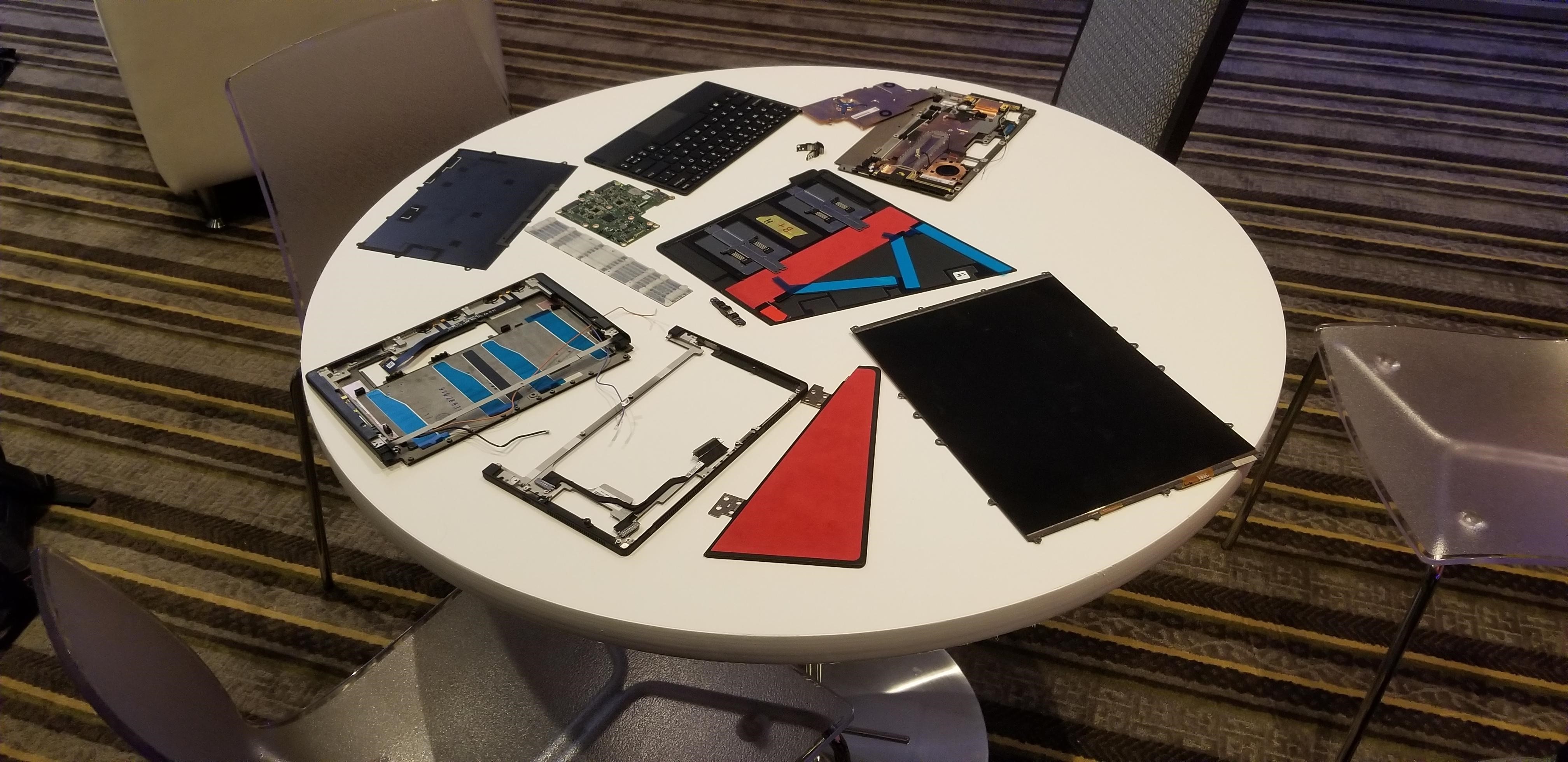
Lenovo unveiled its ThinkPad X1 Fold here at CES 2020, and during our tour of the company's suite we noticed that the foldable device is listed with an "Intel Hybrid Technology" processor and support for LPDDR4X 4267MHz memory, which are both tell-tale signs of Intel's 10nm Lakefield processors.
While the X1 Fold itself if an impressive convergence of several new leading-edge technologies, like a foldable screen and impressively thin chassis, the possibility of this being a Lakefield processor stands out: If true, this would be the first public sighting of the world's first mass-produced 3D processor in a shipping device. The new chip tech also marks the debut of Intel's Foveros 3D packaging technology.
Lenovo did not confirm that the hybrid processor is in fact Lakefield, but beyond the fact that Intel calls Lakefield its first "Hybrid x86 Technology" chip, we've tracked Lakefield from Intel's first announcements through to deep-dive architectural coverage at the Hot Chips conference earlier this year, and after Lenovo tore the device apart to highlight the thermal solution, we can state unequivocally that this is in fact Intel's new radical take on processor design. There's simply no other Intel chip on the market, or expected to come in the near future, that aligns with the different clues scattered around the X1 Fold's motherboard.
Not to mention the clues around the operating system Lenovo will use for the launch-day X1 Fold models, and its intentions to switch to another version in the near future and the resulting advantages.
Lakefield is a five-core processor that takes many queues from ARM's big.little processor designs. In effect, the chip has one large Sunny Cove processing core that's accompanied by four smaller Tremont cores (of Atom fame). The general idea here is to target workloads that require high clock speeds to the high-powered large core, while workloads that require sustained performance are shuffled off to the four low-power cores.
This technique provides superb battery life while preserving high performance, but it requires quite a bit of scheduling magic inside Windows to make sure that the applications are using the correct cores for the task at hand. However, current flavors of the Windows 10 operating system aren't designed to target workloads at this type of specific implementation, but Windows 10 X is designed not only to enable friendly display options for these types of foldable devices, but more importantly, to use specialized scheduling technology to support Lakefield.
That means Lenovo's revelation that it will launch the X1 Fold with Windows 10 Pro is especially telling, as the company told us that will result in lower battery life than possible with Windows 10 X, which the company will add support for in the future. Lenovo cited several reasons for the delay of Windows 10 X on the X1 Fold, with the reluctance of enterprise users to switch to new operating systems being chief among them. However, the fact that the company stated battery life will improve when it adds support for Windows 10 X due to enhanced support for the hybrid architecture is yet another clue that this is Lakefield.
Get Tom's Hardware's best news and in-depth reviews, straight to your inbox.
Lenovo also made another important revelation: Not only will Windows 10 X be required to exploit the full advantages of the chip, but applications will also have to be specifically tuned to target the different cores. This could prove to be one of Intel's biggest challenges that restricts fast uptake of the Lakefield architecture, as the software ecosystem has a long history of being exceptionally slow in supporting new architectures, particularly if the tech isn't present in the market in mass quantities. That reluctance has led to the early die-off of several promising technologies in the past, but given Intel's market presence, the cooperation of big OEMs like Lenovo, and Lakefield's broad x86 compatibility and good-enough performance even without precise scheduling, it's doubtful that the software ecosystem will hasten the demise of the initiative. Progress on extracting the full benefits might be slow, though.
But Lakefield has plenty of other advantages: Make no mistake, this is whiz-bang tech that's worthy of several articles (as we've shared above), and its other advantages are promising enough to offset the software and operating system challenges.

Lakefield processors are the first to come to market with Intel's new 3D chip-stacking technology, and the current design consists of two dies. The lower die houses all of the typical southbridge features, like I/O connections, and the integrated graphics engine. This second die is fabbed on the 22FFL process. The upper die is a 10nm CPU that features one large compute core and four smaller Tremont-based 'efficiency' cores, and the two die are connected through TSV connections that enable superior throughput and power efficiency. Finally, the company stacks DRAM atop the 3D processor in a PoP (package-on-Package) implementation.
The collection of these technologies reduces the componentry required on the motherboard, resulting in a denser device. That's perfect for thin-and-light and foldable devices, and as we can see from the tear-down pictures above, the components inside the incredibly-thin X1 Fold are so slim that some almost appear to be stickers on the table.

Here we can see the incredibly thin motherboard that rides inside the X1 Fold's chassis. This motherboard houses the requisite chips for the device, but it is incredibly thin given the support for LPDDR4X, which typically requires more robust PCBs due to its complex memory trace requirements. That isn't an issue for the X1 Fold because the memory itself is integrated directly into the Lakefield package, thus removing the requirement for memory traces on the motherboard to connect the chip and memory. That's yet another advantage of the Lakefield processors.
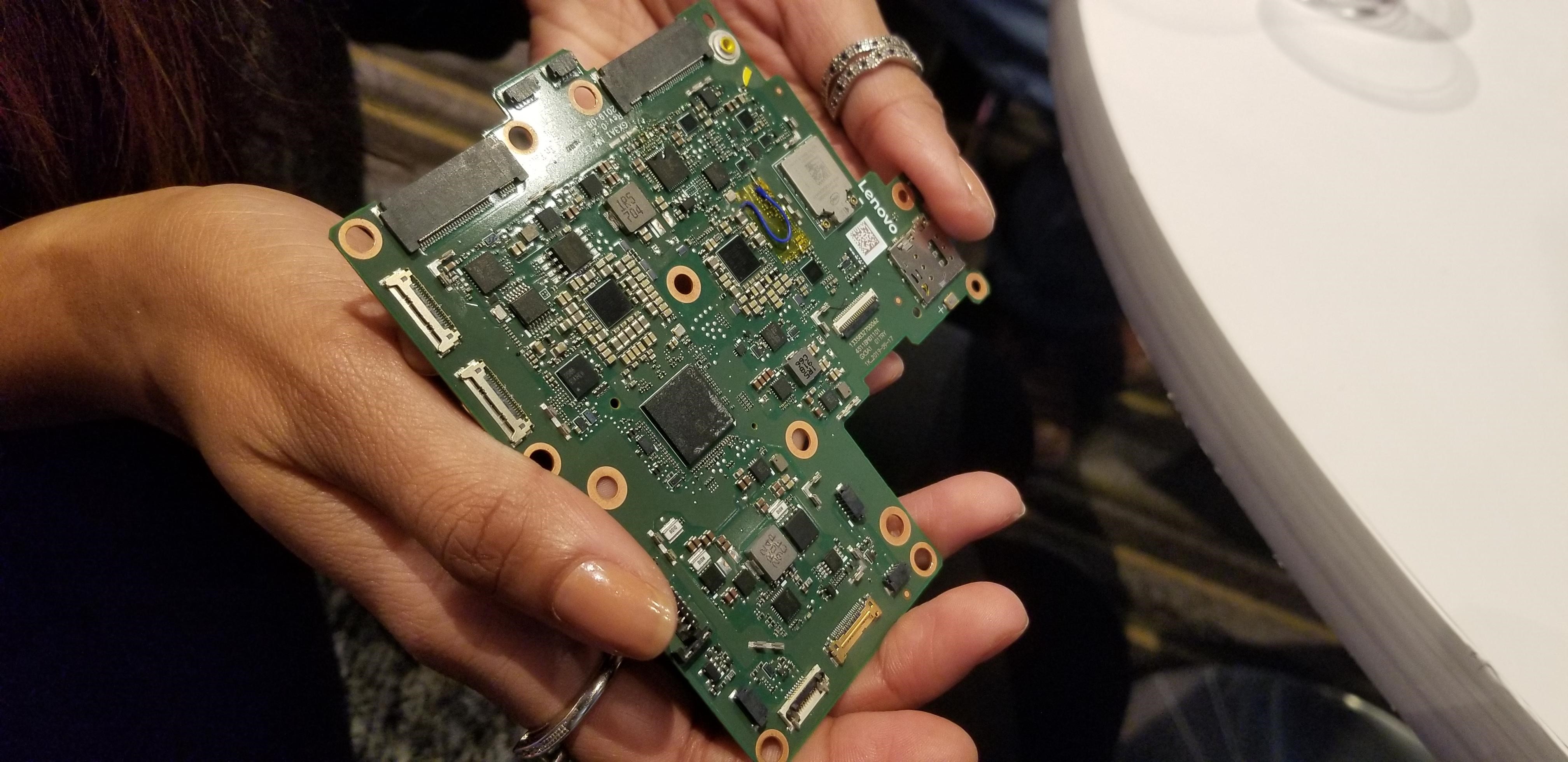

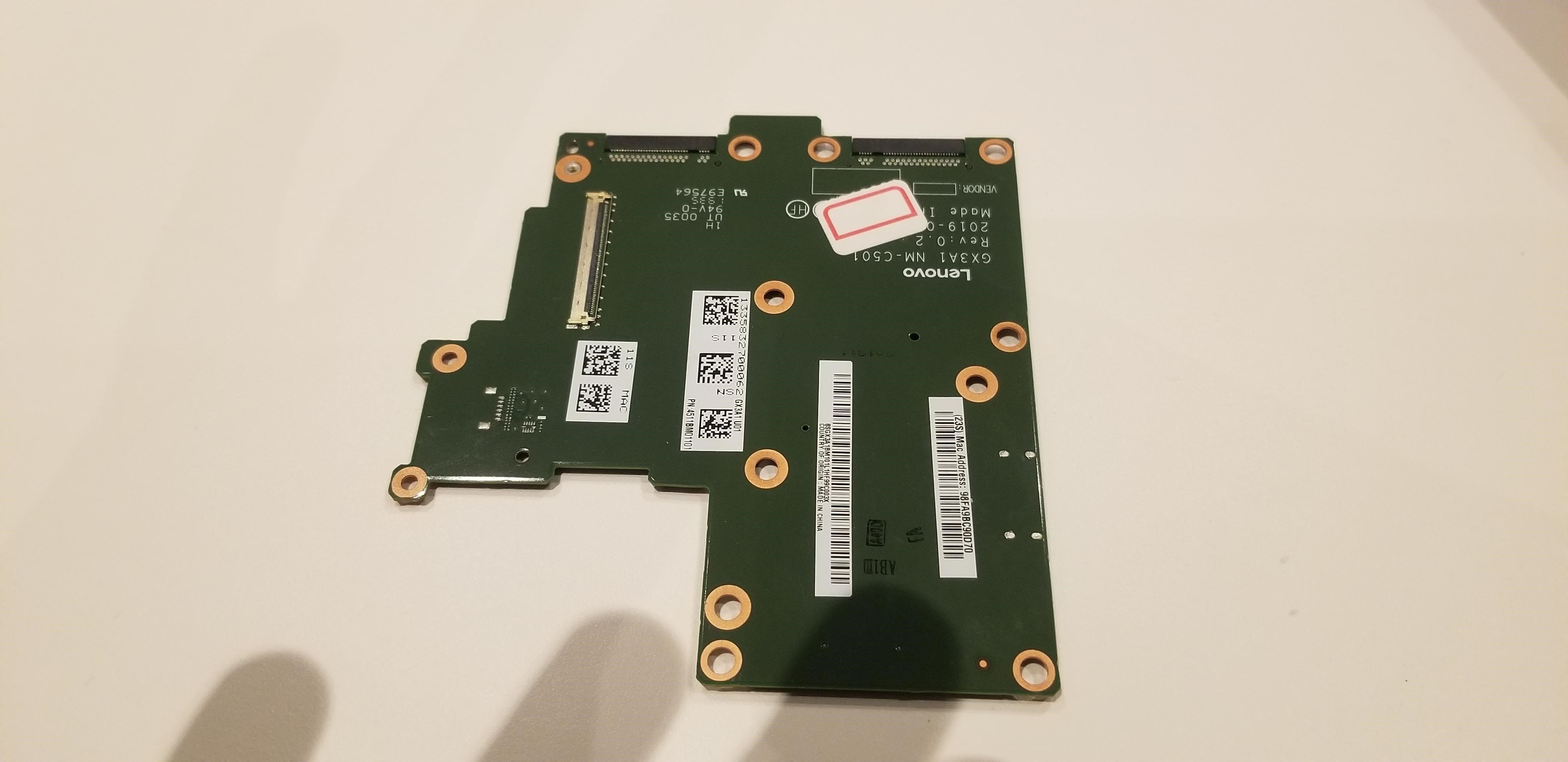
A closer examination of the motherboard also reveals the lack of visible memory chips or SODIMMs, but that's because the memory rides atop of the stacked Lakefield dies. We can see the large black package in the near the middle-left side of the motherboard. As with many mobile chips, the Lakefield processor doesn't come with an integrated heat spreader (IHS) like we see on desktop chips. This type of bare-die implementation increases thermal dissipation capabilities and results in a thinner device. You'll also notice that the rear of the motherboard is devoid of components.
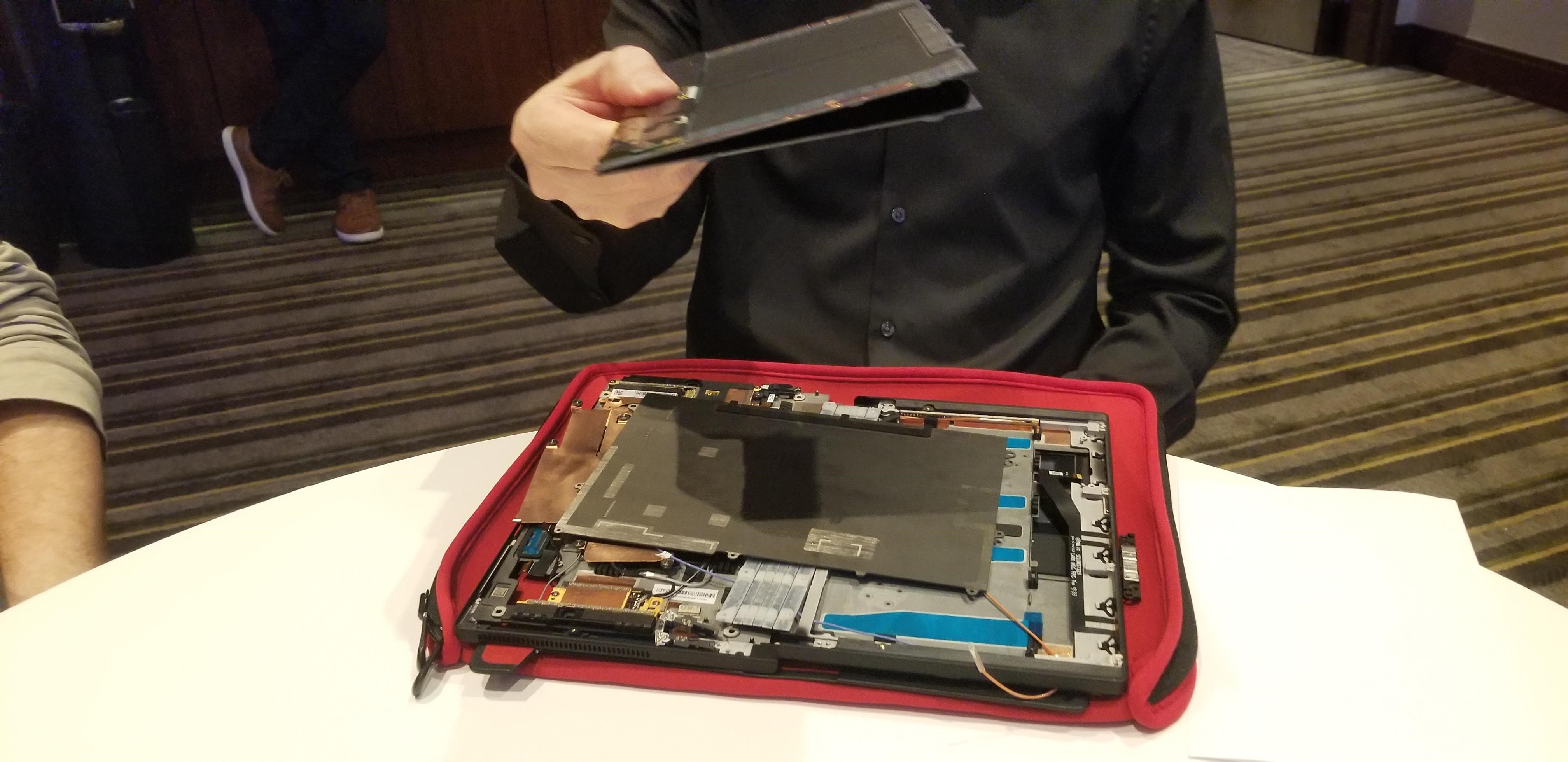
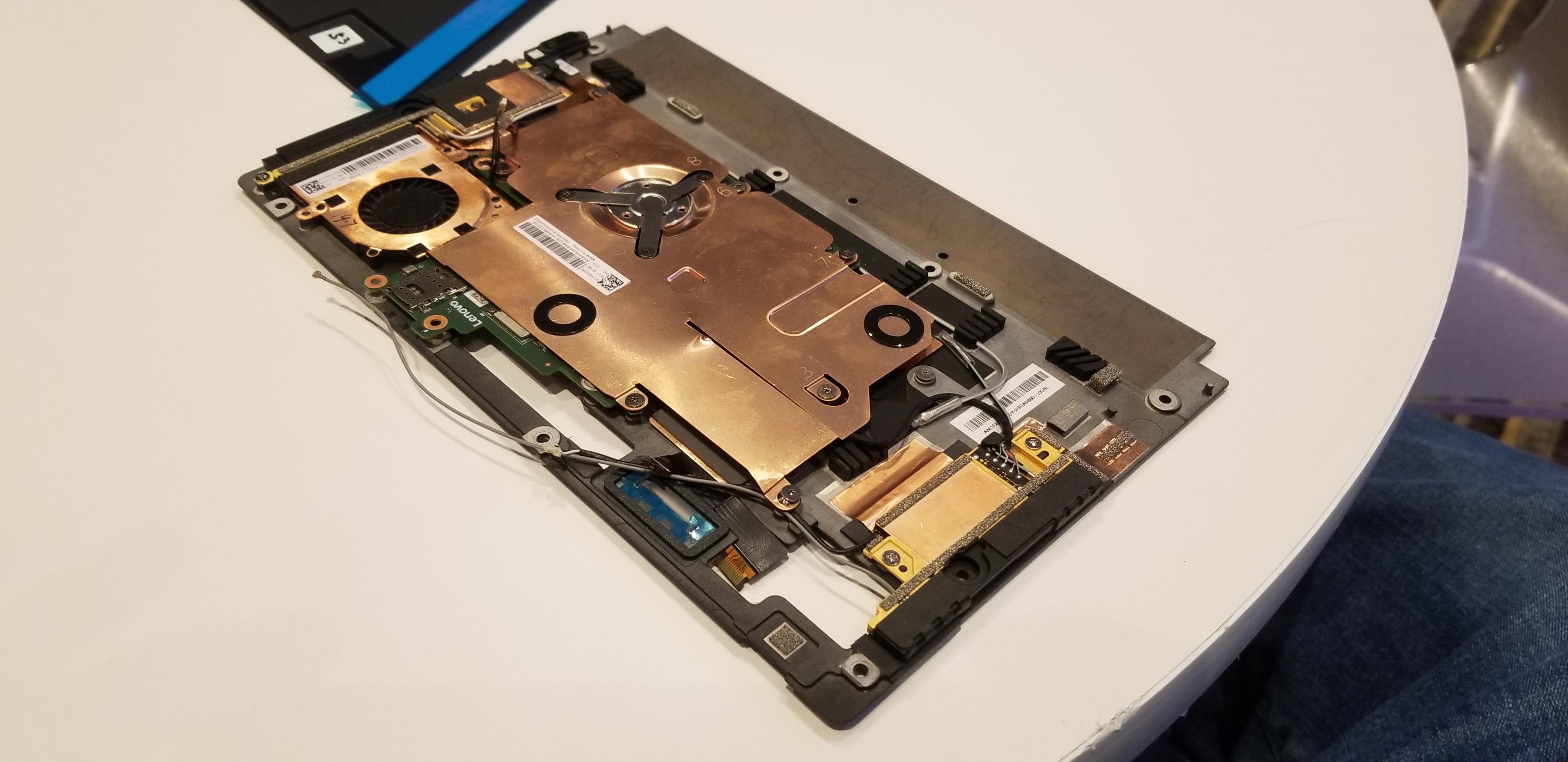

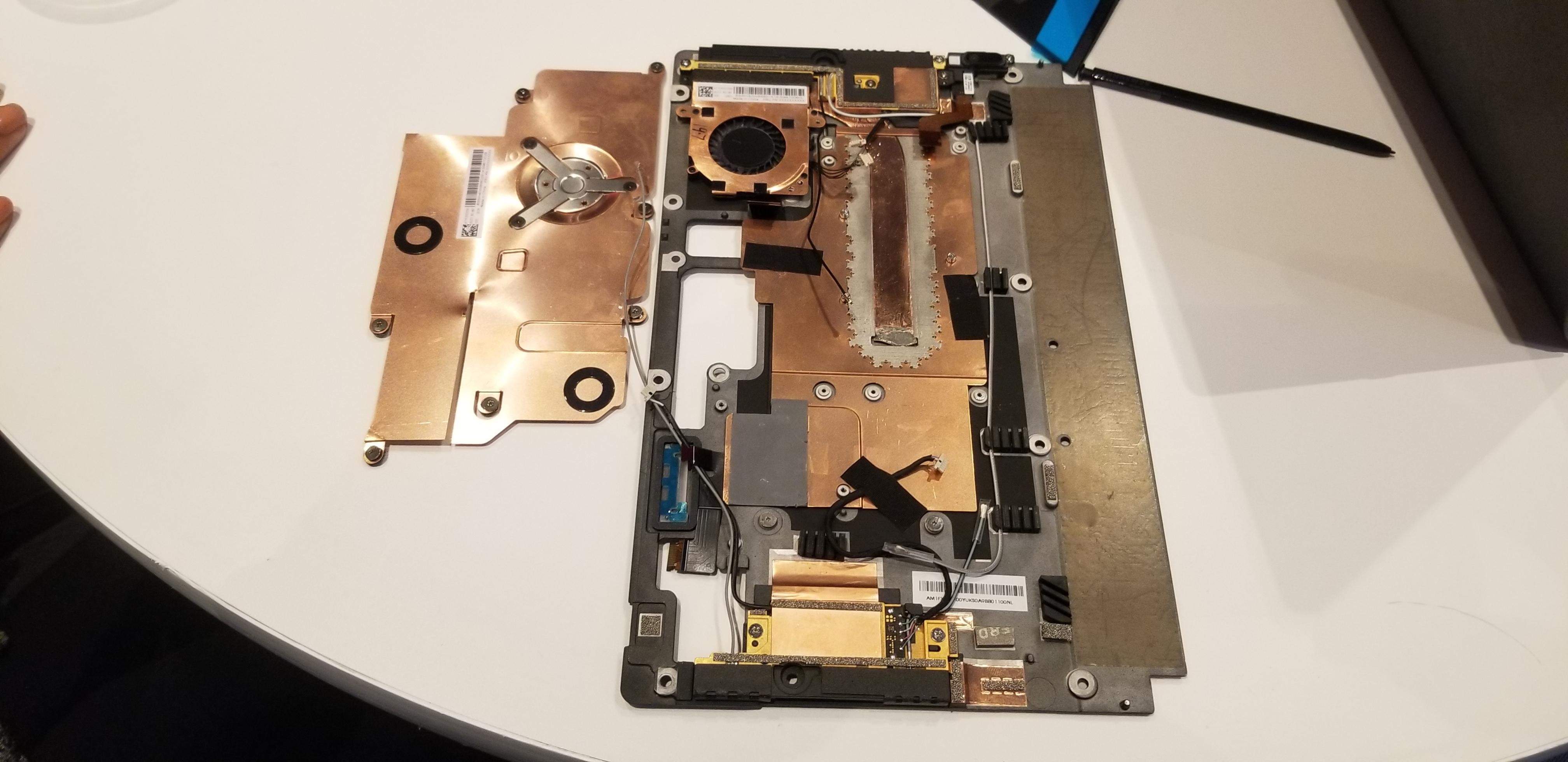
Because the Lakefield processor itself consists of many components that are normally spread across a motherboard, thermal density is a concern. In short, the dense concentration of all of these components in one small package could potentially create a lot of heat in a very small area, which can be exceptionally hard to cool.
Lenovo wouldn't discuss how much power the processor requires, but Intel has told us in the past that it consumes ~7W. That relatively low power consumption helps ease some of the density concerns, but Lenovo also infused the device with an innovative sandwiched heat sink design that removes heat from both the top and the bottom of the processor. We can see those large (but thin) copper plates in the pictures above. The lower plate also has a thermal vapor chamber that extends across the length of the motherboard to transfer heat from the processor to the stacked-fin heatsinks that are cooled by the fan that exhausts waste heat out of the side of the device.
The X1 Fold represents an amazing collection of technologies, from the foldable 13.3" OLED screen to the unique braced hinge and spring-loaded leafs that ease the transition from a flat to folded device, but, in this article, we merely focused on the chip and its impact on the design. For more on the other details, head over to our launch-day coverage of the X1 Fold.
Meanwhile, we'll be at Intel's CES keynote to cover the latest developments, and we expect official confirmation of the Lakefield processor to be announced there. Stay tuned.

Paul Alcorn is the Editor-in-Chief for Tom's Hardware US. He also writes news and reviews on CPUs, storage, and enterprise hardware.